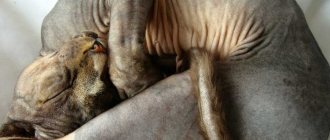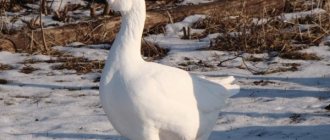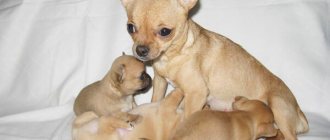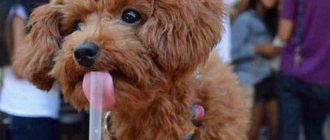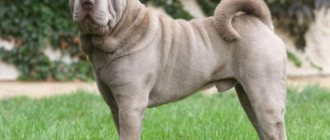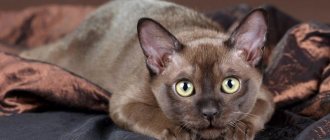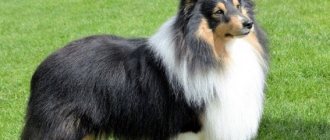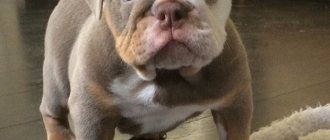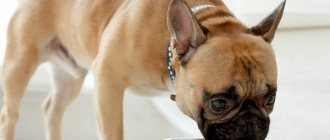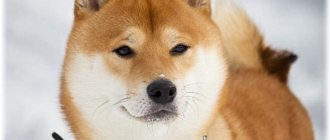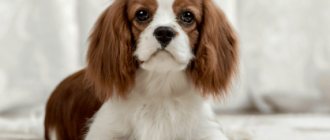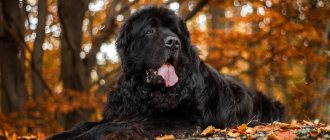This is one of the old Russian breeds, bred in the central region of Russia. Burenki got their name from their place of origin: the Kholmogory district is geographically part of the Arkhangelsk region. The development of livestock was facilitated by the emergence of a local port and the demand for dairy products in Moscow and St. Petersburg. The Kholmogory breed of cows developed due to the imported Dutch representatives, and common features were also discovered between them by the Yaroslavl cows.
Now Kholmogory cattle are raised in the non-chernozem zone, namely in:
- Arkhangelsk;
- Vologda;
- Kaluga;
- Kirovskaya;
- Moscow;
- Leningrad regions.
Kholmogorok is successfully kept at breeding farms in Tatarstan, Karelia, Komi, and Udmurtia.
In the northern regions, cows have good adaptability to cool climatic conditions. For example, in the Komi Republic, the milk yield of purebred cows is about 3,000 kg during the lactation period, the milk fat content is 3.8%.
Maintenance of hillocks at home
The Kholmogory cow is not demanding in care and maintenance.
Due to their size, animals need appropriate housing that is spacious and comfortable. The cow is kept in two ways: free and restricted. In the second case, the animal is tied to a place with a chain, from which it does not move more than a meter. This option is used on large farms, as this approach makes caring for the breed easier. If you keep one or two, it is better not to tie the “pet”.
When arranging a room for the Kholmogory breed of cows, remember the following:
- The barn should be lit and ventilated.
- Provide warmth during the winter months: the temperature inside should be at least 15°C.
- Provide windows for sunlight.
- Concrete floor is the best option.
- Place a bedding on the floor, which consists of 2 layers: hay and peat. The lower one is changed 2 times a year, and the upper one – daily. Keep it dry to prevent your animals' hooves and feet from becoming damp.
- Provide shared food and water bowls.
- Set up a milking area. This should be a clearly marked place that is not in the sleeping or lying area. The best option is to build a special stall.
If you decide to have young animals, prepare to care for them. For 14-30 days, the babies remain with their mother, who feeds the children with milk. Then, the Kholmogory calves are transferred to a separate room, where the health of the offspring is carefully monitored. This happens throughout the week. Next, the babies are taken to the calf barn, where they are kept, both in an individual cage and in a group.
The procedure for milking heifers is also important. Here are some rules and “rituals” to follow:
- Milk the heifer only in clean clothes.
- Wash your hands before entering the cow.
- Rinse the udder with water.
- Wipe your nipples dry and massage.
- Try to milk the girl quickly, while holding the nipples in your fist, not your fingers.
- First of all, the front milkings are milked, and then the rear ones.
- After completing the procedure, massage the udder.
History of creation
The Kholmogory district is a fairly vast territory, located along the banks of the Northern Dvina and islands near the mouth of the river. Arkhangelsk and its region, on whose territory the Kholmogory district is located, have long been one of the important port cities of Russia since the 13th century. And even during the reign of Peter 1, foreign ships came to this city, bringing not only various goods, but also cattle.
“Foreign” cattle grazed on pastures next to local cows. And the succulent grasses that the animals ate on the natural pastures of Kholmogory were extremely beneficial for the dairy cow breeds - milk yield increased and the fat content of milk increased.
For two centuries, breeders crossed local cows with Holstein and Dutch bulls. The good food supply in this region, as well as the increasing demand for dairy cattle and their products, also influenced the emergence of a new breed of these animals.
Two long centuries have passed since the beginning of breeding work to create a new species resistant to cold climates - only by the middle of the last century the Kholmogory breed of cows was officially represented in the agricultural community and was officially registered. And since then it has gained wide popularity among farmers involved in the production of dairy products in the northern regions of our country.
Maintenance and care
It is possible to obtain results that fully comply with the standard characteristics of this breed only with proper care of the animals, which we will discuss further.
Did you know? The heaviest cow in the world is still considered to be a representative of a mixture of Holstein and Durchman breeds - Mount Katahdin, who lived more than 100 years ago. Her weight then reached 2 tons and 270 kg. The data included in the Guinness Book of Records indicates that the volume of the animal’s body was 3.96 m, and its height reached 188 cm.
Summer walking area
In the summer, representatives of the species should be on a walking area equipped with a canopy to protect the livestock from difficult weather conditions (precipitation and heat). Being in the fresh air ensures their good development and growth. A prerequisite for equipping the site is its spaciousness due to the nature of the animals (it is better not to limit their personal space).
Arrangement of the barn
For the winter, cows are moved to a warm, dry building without potential exposure to draft winds. Straw is suitable as a 10–15 cm thick bedding on a wooden floor. The stall is adjusted to the individual size characteristics of the cow or bull, again taking into account the animal’s love of freedom. The optimal dimensions of a fenced space for one individual are: width - from 1 to 1.5 m, length - from 2 to 2.5 m.
Did you know? Every 60 seconds, a cow needs to make from 30 to 90 chewing movements with its jaws, and the amount of saliva required for chewing ranges from 90 to 190 liters.
Directly in front of the stall there is a feed trough (long plastic) for food. For mixed feed, you can take an automatic feeder of an elongated rectangular shape with a hopper, for hay and other dry food - cylindrical feeders. Often cattle owners make excellent designs for this purpose—feed tables. If the cows are in an unattached state, it would be rational to design hanging feeders.
The barn, or barn, must be insulated, despite the fact that the animals tolerate low temperatures well: for this it will be enough to insulate the walls and install airtight doors.
Conditions of detention
The most suitable temperature for comfortable keeping of Ayrshires is considered to be the range from +15 to +17 °C.
There must be light in the barn, so for lighting for a period of at least 12–14 hours you will need lamps with a power of 40 W per one enclosed area.
Animals are very difficult to tolerate heat, as opposed to moisture and cold, so the room in which they are housed must be ventilated in order for the cows to receive additional oxygen.
Important! If we talk about the character of Ayrshires, they are extremely stubborn, willful and independent. However, they easily and naturally adapt to harsh climatic conditions and are ready to tolerate fairly low temperatures in the external atmosphere.
Cleaning
The barn in which the cattle are kept must be kept in strict cleanliness, since ineffective cleaning of the stall causes animals to more often succumb to ailments and the development of painful processes in the body. That is why daily cleaning of the premises, as well as washing drinking bowls and feeders, are necessary conditions for keeping Ayrshires, which will help avoid the occurrence of diseases.
At the time of cleaning, the cows are taken out of the stall, then the floor is cleaned, and the containers for food and water are washed. The flooring is replaced only after all debris and dirt have been removed from the shed. In addition, the layers of litter also need to be changed regularly (the upper surface layer - every day, the lower deep layer - once a week).
Did you know? Representatives of cattle such as cows have a very well-developed sense of time, so one of the most important rules in caring for them is to maintain a clear and almost unchanged daily routine. At the same time, in order for the health and condition of animals to be at a high level, they need to be allocated a sufficient number of hours for sleep - at least 7.
Preparing for milking
Before milking begins, the owner must clean the pen, lock the barn and tie up the animal, then change into clean clothes and wash his hands with warm water and soap. Using a clean rag you need to wipe the belly and legs of the cattle. It is necessary to wash the udder with warm water, then wipe it with a clean and dry towel, and only then begin the milking process.
Farmers' opinions
Those who keep Kholmogory cattle appreciate the unpretentiousness of the animals. For example, user Denis from Penza notes that, in comparison with foreign representatives, Kholmogorkas do not need greenhouse conditions. The same farmer notes the gluttony of the breed's representatives.
User Pavel from Omsk says that he purchased Kholmogorok because the price for cows was low. The farmer notes that the animal is perfectly adapted to difficult climatic conditions. In comparison with foreign breed representatives, it feels better in the Siberian region.
Maintenance of hillocks at home
Breeding this type of animal does not create difficulties. It is necessary to create simple living conditions - spacious stalls, access to open air pastures. The organization must take into account several features, including:
a strong building with reliable walls. For small livestock, a barn or garage is suitable. A significant number of livestock requires the construction of separate stalls; heating of the room. The temperature should be at least 15 degrees Celsius at any time of the year; ventilation and lighting. In addition to artificial light, the sun's rays must penetrate into the building. The air must be kept fresh and clean; creating gutters for draining sewage - manure and urine. They are cut directly into the concrete floor; a dry mat is created on the floor
Dryness is important to maintain year round to maintain animal health. High humidity negatively affects the limbs and the air quality in the room; Feeding areas are organized depending on the type of housing - tethered or free
In the first case, individual feeders and drinkers are created, in the second - common ones. It is important to ensure that all animals have simultaneous access to water and food. Periodic disinfection of feeding containers is also necessary; a separate room is allocated for milking; Kholmogory breed of calves after birth are kept with their mother for two and a half weeks. After this, they are kept separately for five days. Then the babies are kept in individual or group calf pens. Calves can be kept alone for no longer than a month, after which they can be transferred to groups.
The Kholmogory breed of cattle is grazed in groups, which is important for mental stability and normal development. To do this, you can unite the herds of farmers, and hire a shepherd for grazing
The Kholmogory breed was bred and developed over a long period of time, naturally and with minor crossings occurring in harsh conditions. This undoubtedly gave her such qualities as endurance to various kinds of diseases, especially colds.
Kholmogory cows have high immunity
Kholmogory cows are practically not susceptible to:
- udder diseases;
- leukemia;
- catarrh of the respiratory tract;
- rheumatism;
- tuberculosis.
The exterior of the breed is distinguished by the high growth of animals (1.3 meters at the withers) and a strong constitution. The body is elongated, angular and “rough”. These cows never became “handsome” and round-sided, despite all the efforts of the breeders. In addition to the awkward body, they also have a narrow, sunken chest, a wide, raised rear and sacrum.
Herd of Kholmogory cows
Cows have a regular shaped frame with limbs growing out of it in proportion. But the legs themselves are crooked, especially the hind legs. The large body (even too large for dairy breeds) has an udder of rather modest size, in the shape of a bowl, goat shape or circle. Sometimes you can find cows with a third pair of teats - this is not a criterion for culling the breed.
Kholmogory cow in the pasture
Cows black and white coloring
Table. Exterior characteristics of Kholmogory cows
| Part of the body | Description |
| Head size | average |
| Neck | thin, medium length |
| Muzzle | elongated |
| Body type | broad-boned, strong, rough, medium-developed topography |
| Sacrum | wide, raised |
| Body | elongated |
| Bust | 1.98 m |
| Chest depth | 0.72 m |
| Dewlap | underdeveloped |
| Udder | proportional, cup-shaped, medium-sized |
| Nipples | cylindrical |
| Limbs | long, uneven, positioned proportionally |
| Average height of withers | 1.3-1.35 m |
| Body oblique in length | 1.62 m |
| Pastern in girth | 0.2 m |
The fact that cows can grow and give milk even in Kolyma, in conditions that are problematic for keeping livestock, is the main and most important advantage of the hills. But there are other advantages that are balanced by a fair number of disadvantages
Kholmogory cows have both advantages and disadvantages
Table. Advantages and disadvantages of the breed
| pros | Minuses |
| Disease resistance, immunity | Negative experience of keeping in a hot climate - milk yield is significantly reduced |
| Unpretentiousness and endurance to harsh climatic conditions | Decrease in the yield of meat products in the southern regions |
| High milk yields in cold climates, good quality and stable milk fat content | Narrow chest |
| Good meat quality, high meat productivity | Crooked hind legs |
Diseases
Kholmogorki are distinguished by good health and high immunity . Hardened and perfectly adapted to the northern climate, they are almost not susceptible to colds.
Rarely encountered: tuberculosis, rheumatism, udder diseases .
Resistance to leukemia is high . Thanks to the efforts of breeders, this trait is stably preserved in crossbred animals - descendants of Kholmogorka and Holstein.
Characteristics of the Kholmogory breed
In the Kholmogory breed of cows, the main characteristics relate to their size and milk production. Adults of this breed are quite large. Their height at the withers reaches 1.3 m, and Kholmogory bulls are slightly taller than females. The average weight of an adult cow reaches 450-500 kg. Kholmogory bulls weigh from 750 to 840 kg, adult Kholmogory bulls average more than a ton. A distinctive feature of these representatives of cattle is the fact that even two-day-old Kholmogory calves already weigh at least 30 kg, and individual specimens can weigh about 36 kg.
With proper feeding and good housing conditions, calves of this breed quickly gain weight and their muscles become stronger. By six months, heifers weigh up to 180 kg, and bull calves - up to 210 kg. At 1.5 years old, Kholmogory bulls already gain weight up to 390-410 kg.
Kholmogory breed of cows
Adult cows, if they are healthy, produce about 4000 liters of milk per year with good taste. If you follow all the rules for keeping these cows and plan the diet correctly, you can increase the amount of milk yield to 6000 liters. Well-known Kholmogory record holders usually produce at least 9,800 liters of milk.
Note! Some other well-known breeds of cows have approximately the same fat content indicators: Jersey, Simmental, Aishir, Red Steppe. According to the indicators, the milk of such cows contains:. According to indicators, the milk of such cows contains:
According to indicators, the milk of such cows contains:
- not less than 3.8% fat content;
- the percentage of protein is about 3.6%.
Although this breed is considered a dairy breed, the percentage of meat yield at slaughter from representatives of Kholmogory individuals is average:
- up to 55-60% of meat products are obtained from cows;
- in bull calves this figure is higher and reaches 65-67% by the age of one and a half years.
20th century breeding attempts
At the beginning of the last century, the development of this breed reached the all-Union level; in 1934, a breeding plant was opened specifically for Kholmogory cows. A couple of years later, they tried to cross these cows with Ostfries bulls from Germany in order to increase milk yield and improve their appearance. But the test failed, the cows only reduced their milk yield, but their appearance did not change at all.
Then the attempts stopped, and were continued only at the end of the century by modern scientists. We even managed to breed 2 inbreeding species:
- Istobenskaya.
- Tagilskaya.
Indicators such as the shape of the udder and the rate of milk release are being improved, and options for improving physique, increasing milk yield, and fat content of the product are also being considered. Breeders say one of their main goals is 4% milk fat content and even higher.
An attempt to cross Kholmogorok with imported bulls led to the loss of Y-chromosome gallotypes in northern cattle. And in terms of autosomes and the X chromosome, the gene pool of the Kholmogory breed retains its originality. Today, purebred Kholmogorkas are given less attention and conditions compared to Holsteinized Kholmogorkas. Although scientists do not consider this approach correct.
About the productivity of Kholmogory cows
Initially, the Kholmogory breed was bred as a dairy breed, but at the moment breeders are actively conducting breeding work to increase both the meat and milk productivity of the species.
It is worth dwelling in more detail on the reproductive abilities of Kholmogory cows. Most newborn calves weigh quite a lot: females weigh up to 35 kg, and males – 39 kg. Since mainly bulls are fattened for further slaughter for meat, they are provided with enhanced feeding immediately after birth. In this case, the weight of an individual already at six months of age can reach 200 kg.
If we talk about the productivity of adult Kholmogory cows, it should be noted that in one lactation period one female can produce up to 3,300 milk yields, but in particularly productive individuals this figure can reach 5 thousand. The milk fat content of this breed is not very high, approximately 3.6-3.8%, but current breeding work is aimed at increasing the milk fat content to 4%.
Bulls of the Kholmogory breed, which are kept for further slaughter for meat, are considered no less productive. The average weight of a male is 950 kg, but individual individuals that are heavily fed can weigh more than a ton. At the same time, the slaughter yield is also considered quite high, as for a dairy breed of cattle and is approximately 54%. In other words, most of the carcass is quality beef that is suitable for human consumption. However, for more intensive weight gain, bulls are most often castrated. Firstly, it accelerates weight gain up to 1 kg per day, and secondly, it increases the slaughter yield to 58-65%.
Figure 5. Feeding young animals and adults
In general, we can say with confidence that Kholmogory cattle are better suited than other breeds for growing in temperate and harsh climates. It is distinguished by its endurance, unpretentiousness to housing and feeding conditions, and has good meat and milk productivity even when kept exclusively on pasture. In addition, Kholmogory cows get sick much less often and are highly fertile.
It should be borne in mind that this breed also has several disadvantages. First of all, physical developmental defects are very clearly manifested in animals: narrow chests and pendulous rears. When breeding in steppe regions with an arid climate and sparse vegetation, the milk productivity of cows quickly decreases, so when raised in such conditions, care must be taken to ensure high-quality supplementary feeding of the livestock. These shortcomings cannot be called critical, but in combination with numerous advantages and high life expectancy, Kholmogory cows can be called quite suitable for breeding.
If you are interested in more detailed information about the Kholmogory breed of cows, we recommend that you watch the video, which provides a detailed description of these animals.
Price
Due to the fact that Kholmogorok is actively bred in Russia, their prices are quite reasonable.
In the table, the cost of adult individuals is given at the rate of 150 rubles per kilogram:
| Representatives | Price |
| Calf 1 month | 11 thousand rubles. |
| Calf 2 months old | 13 thousand rubles. |
| Adults: | |
| Bull - 1000 kg. | 150 thousand rubles. |
| Cow - 500 kg. | 75 thousand rubles. |
Features of keeping calves
Newborn calves, as already noted, after calving are kept with their mother throughout the entire milk feeding period, which takes 18-20 days for the Kholmogory breed. Then they are transferred to a separate room, and only after 3-5 days, having made sure that the calf is healthy and developing normally, are they placed in a calf barn.
In a specially equipped calf barn, they can be kept both in groups and individually.
Custom Content
The individual method of maintenance has both disadvantages and advantages.
Individual houses for keeping calves
Table. Advantages and disadvantages of individual housing of calves.
| pros | Minuses |
| Saving space, relevant for small rooms reserved for calf barns | There is no competition, appetite is correspondingly reduced, food is absorbed sluggishly |
| Animals do not contact each other, which means they do not spread infections and germs | No active weight gain |
| It is more convenient to care for them personally | The mental development of these herd animals alone can be disrupted |
| Inactivity leads to poor physical development |
Group content
Group cage (free-stall) housing of calves
It is better to form small groups of 5-8 individuals. They are kept together for 6-8 months. The room for such maintenance will have to be prepared in a special way.
- Wooden floors are laid; each calf should have 1.6 m² of area.
- Drinkers and feeders are installed in such a quantity that all animals can have free access to them at the same time.
- To avoid intestinal infections, feeders and drinking bowls are disinfected daily.
- Dry, clean bedding is added to the floor every day.
Young animals older than eight months are subject to regrouping. They are differentiated according to developmental characteristics, age and gender. For each group, a specific feed ration is selected, which contains certain components in a strengthened composition.
Feeding calves
The main food of a newborn calf is colostrum, which it receives from its mother.
It is especially important in the first six days of life. The immunity, health and weight gain of the calf will depend on receiving colostrum in sufficient quantities during this period.
Month old calf
If there is a shortage of colostrum, it can be replaced or supplemented with the following homemade composition, which the calf is supplemented with manually.
- A liter of milk.
- 4 raw eggs.
- 15 g fish oil.
- 10 g table salt.
Everything is thoroughly mixed, and the mixture is given to the calf in the first week of life in the amount of 300 ml per day half an hour before any of the feedings, of which at this age the calf should have five.
Feeding calves milk from bottles
From the tenth day of life, calves can be switched to four feedings a day and supplemented with liquid semolina (80 g per 3 liters of milk).
Gradually, from the age of one month, soft hay and mixed feed are introduced into the diet. Dairy feeding stops completely when the calf is three months old.
A one and a half month old calf can be gradually accustomed to succulent feed. To do this, vegetables are added to the hay: potatoes, carrots, beets, apples - all in raw crushed form. Salt, chalk and meat and bone meal must be active additives to the diet.
Feeding the calf
Kholmogory calves will benefit from oatmeal jelly. It is prepared as follows: 80 g of flakes are poured into a liter of boiling water, mixed well several times for ten minutes and cooled.
Oatmeal jelly
Table. The norm for giving jelly to calves.
| Age (in days) | Quantity (in g) |
| 10 | 200 |
| 16 | 400 |
| 19 | 600 |
| 21 | 700 |
| 25 | 900 |
| 30 | 1200 |
| 32 | 1800 |
| 36 | 2400 |
Breeding Kholmogory cows can become a profitable business. All farmers who work with this breed note its unpretentiousness, disease resistance, endurance, and productivity.
The Kholmogory breed today ranks third in the Russian Federation not only in terms of the number of dairy, but also the number of meat and dairy breeds raised. They constitute 9% of the total livestock in the country. 18 regions are engaged in industrial breeding of this breed alone. And also thousands of farmers who lovingly call their cows “Kholmogorki”.
Holsteinized kholmogorka at an agricultural exhibition in the Velsk region
Feeding
Types of feed vary depending on seasonality and calving. In the warm season, Kholmogorki make do with pasture food: vegetables from gardens, fruits, and various green vegetation.
There is no grass in winter; it is replaced with hay. Additives in the form of straw, mixed feed, and root crops are possible.
On livestock farms, vitamin premixes are introduced into the winter diet. These are ready-made mixtures that are developed by veterinarians.
If the winter diet is poor, the cows will sharply reduce their milk yield.
Additives in the form of flour and cake - these are sunflower pomace after oil processing - will be useful at home. Root vegetables should be fed with caution, especially to pregnant cows.
Junk food
For example, an excess of vegetables in the diet leads to excessive weight gain, and this leads to difficulties with calving.
Also, pregnant females should not be spoiled with cake. This type of feed is given to increase milk yield. Cows at launch, before calving, do not need this.
Daily diet (table)
| Types of feed | Standard indicators in kg per feeding |
| Meadow hay | 30 |
| Compound feed | 15 |
| Potato | 10 |
| Carrot | 5 |
| Beet | 5 |
| Salt | 0,05 |
Hill hills require an optimal diet. They immediately react to a lack of food or necessary vitamin supplements with low milk yield, and bull calves with poor weight gain. An unbalanced diet can also provoke a short period of lactation.
It is recommended to pay special attention to preparing cows for calving, when nutrition, supplements, and even proper milking are important.
Also, proper nutrition is an indicator of the quantity and quality of milk. A Kholmogory cow can eat up to 80 kg of hay in a day, so if you don’t turn it out for grazing, you will have to stock up on a lot of food.
Tips for feeding hillocks:
- Provide a clear diet.
- Add flaxseed and sunflower cake, mixtures of cereals and legumes.
- The intervals between feeding and milking should be the same.
Cows are fed three times a day, but this is based on milk yield - 20 liters per day. Kholmogorki gives up to 30 liters, so you need to distribute food at least 5 times a day.
Corn and root crops can be replaced with nutritious grain haylage; this solution will help reduce the cost and effort of preparing feed. At the same time, the quality and quantity of milk will not deteriorate.
Feeding Features:
- Summer and spring. Pasture and complementary foods can be vegetables and fruits.
- In winter and autumn. Hay, straw, feed, vitamin complexes.
- Drink. Drink only warm water, warm it up in cold weather. In summer, the liquid should be at air temperature. In hot weather, you need a lot of water, as animals remain at risk of dehydration.
Grazing
It is much easier to let the cow out to graze, there is less fuss with feed. The main thing is to provide good pasture, because if there is little grass, milk yield will decrease sharply.
Many farmers unite, paying for the work of the shepherd; this is even an order of magnitude cheaper than purchasing feed in large quantities. But it’s important to release on grass not only for the sake of saving money.
Scientists are convinced that cows, including Kholmogorkas, need to graze for the sake of communication.
As already mentioned, bulls and cows are herd animals; they have their own system of signals in communication. And if a cow or bull does not know how to behave in a herd, problems may begin.
Milking
It is better to make separate stalls for milking. You can milk on the spot, but not in the lying area. Kholmogorok is milked not only by hand, but also by machine, they are non-conflict, and do not get capricious with this approach.
This is convenient if the livestock is large.
It is important to remember that the fattest milk is in the rear lobes of the udder, so it is still better to milk manually or at least check the quality of machine milking.
Diet
In the summer, cows of this breed are able to obtain all the nutrients from juicy fresh grass, especially if it is present in sufficient quantities. In winter, the basis of the diet is hay, straw, crushed wood, and root vegetables. Vegetables are especially important for fattening bulls. Vitamin supplements are also important, particularly in winter. But here you need to take into account the age of the cow, since a separate vitamin complex is selected for each age.
If nutrition is not sufficient, milk yield may drop sharply and increasing it will not be easy. Cake - spent sunflower residues - has a good effect on the cow's body. They give dry food a special taste; cows eat it with great appetite. Cake can quickly increase milk yield, but should not be given to fattening bulls or dry cows. From 1.5 months, calves are taught to eat roughage: hay, chopped root vegetables, fruits; salt and chalk are added to the food. Oatmeal jelly is also useful.
Story
Cattle of the Kholmogory breed existed in the 17th century in the Arkhangelsk region. This name comes from the village of Kholmogory. Under Peter I, Arkhangelsk became the largest port, a center of trade with most European countries.
The climate was favorable for breeding dairy cows. In the floodplain of the Northern Dvina River there were many natural areas for grazing, covered with lush and nutritious grass.
The demand for dairy products also played a major role: frozen milk and other agricultural goods were exported from Arkhangelsk by sea.
Despite the fact that cows and bulls of other breeds were imported into Arkhangelsk for almost two centuries, it is impossible to talk about their significant influence on Kholmogorok.
In Soviet times, scientists conducted breeding studies, during which Kholmogory cows were crossed with representatives of the Holstein and Dutch breeds.
The purpose of crossbreeding was to increase milk yield. But it turned out that the descendants of mixed couples, although they produced a lot of milk, had a noticeably reduced fat content.
At the same time, taste and other indicators deteriorated. In this regard, selection work was stopped.
The Kholmogory breed existed as an independent breed for several centuries, but was officially recorded in 1937.
Breeding
The Kholmogory breed of cattle is convenient to breed, since they have virtually no pathologies at calving. The best time for the first covering of a heifer is the second year of life. The gestation period for Kholmogory is about 283 days. The veterinarian should tell you the exact date of birth. Farmers advise reducing drinking rates before calving, this will help avoid mastitis and other udder diseases. If the measures taken are followed and swelling of the udder begins to be observed, this indicates that the calving period is approaching. Among other signs, experts identify:
- secretion of mucus, especially in the morning;
- marking time;
- active use of the tail for fanning.
During calving, the chicks lie down, and the whole process takes about an hour. During normal birth, the calf appears in the amniotic sac, the fluid from which flows out under its own power. In rare cases it needs to be pierced. There are nuances to caring for a calving cow. For example, it is believed that a cow needs to drink amniotic fluid, so farmers specially collect it in a bucket. According to signs, this will simplify childbirth, and the placenta will pass without complications.
The correct position for a calf during birth is head and hooves forward. It appears wet, the mother herself must dry it by licking the skin. A Kholmogory cow can produce a different number of calves. This is due to the following factors:
- health of the individual;
- external environment;
- feeding ration.
On average, cow cows have up to 15 healthy young over their entire life, weighing from 30 to 40 kg. The size of calves varies depending on the conditions of the pregnant female. Newborn calves are characterized by good health and good adaptation to the external environment. If you take a Kholmogory calf for fattening, you can sell it for meat by the age of six months. The individual will produce a sire in about a year of life.
When breeding bulls for fattening, experts recommend group housing. The efficiency, in comparison with individual breeding, is very high. The weight gain of calves in the group is the best, but resistance to disease is somewhat reduced. The advantage of group housing is reduced labor costs and time for care.
Weak young animals prone to diseases are recommended to be kept in individual boxes. This measure will reduce the risk of infection spreading throughout the herd. Since there is no competition for food, the weight gain will be small
If an adult is purchased for breeding, it is important to take into account the condition of its hooves, horns, teeth, skin, and udder. A healthy cow will look energetic and her gaze will be clear. It is always a good idea to know the history of modern representatives of the breed, which are divided into three subspecies:
It is always a good idea to know the history of modern representatives of the breed, which are divided into three subspecies:
- Northern;
- Central;
- Pechorsky.
The first cross with Holsteins was bred in Arkhangelsk. Foreign bulls did not enter the central region, so local crossbreds are considered originally Russian. For the Pechora subspecies, bulls from the ancestor, which is called “Khlopchatnik,” were used.
Arkhangelsk cows most often show good negative results for leukemia and other infections. Peers along other lines demonstrate an increased incidence of morbidity. Moreover, even if the leukemia virus is detected in a cow, it retains milk production and does not lose its total weight. For humans, this disease is not contagious, as it is transmitted through the blood of an animal. Individuals are allowed to be slaughtered, milk can be consumed.
Among the diseases of the Kholmogory Pechora subspecies, problems with the legs are most often found. Inflammation of the coffin joint often occurs, which is determined by the following signs:
- swollen front of the leg;
- hanging part of the hoof wall;
- general weakness of the animal.
To buy purebred Kholmogory cattle, it is enough to contact such farms in the country as:
- LLC "AGROSNABRESURS";
- KRS-Express LLC;
- LLC "AGROPOSTAVKA"
The farms of Naberezhnye Chelny and Penza can boast of industrial scale breeding. Burenki are widespread in private farmsteads in the Voronezh region, Altai Territory, and Dagestan. The cost of individuals from private owners can be 30 thousand rubles, and from manufacturers - from 140 thousand rubles.
In the next video you can take a look at the Kholmogory breed of cows.
Where can I buy
Kholmogory cattle are bred on various farms throughout the country. Massive populations are observed in Arkhangelsk and Kirov farms.
Cattle can be purchased both at breeding plants and from private traders. It is convenient to view advertisements of Kholmogory cows by photo.
For example, a contact person named Ilmir offers cows from the Kirov region.
AGROSNABRESURS LLC supplies heifers in batches from the city of Naberezhnye Chelny.
KRS-Express LLC from Koktebel is also actively trading in pedigree cattle.
You can find purebred cows and bulls with confirmed pedigrees in Penza. Kholmogory is managed by AGROPOSTAVKA LLC.
Kholmogory breed: description, features
The external appearance of the Kholmogory cow is more comparable to the Dutch individuals. During the entire time of her transformation, some visible data have changed: a stronger physique, impressive forms, an increase in mass. However, the angularity and curvature of the hind legs remained unchanged.
Obvious signs of thoroughbred are:
- Narrow neck, with a head of medium size. The muzzle is elongated.
- Proportional and strong build, with wide bones. Blurred relief.
- The back is widened, the sacrum protrudes. The back is straight and long.
- Chest - 195-198 cm in girth.
- The udder is small, with elongated nipples and equally developed lobes.
- The limbs are monumental and high.
The height of all individuals varies between 130−140 cm, weight - 550 kg. Ordinary bulls have a stable weight of 700-750 kg, and breeding bulls grow up to 1200 kg. In most cases, the Kholmogory breed is distinguished by its black and white color. There are pure resin and brown-variegated varieties. It is quite rare to see a red cow
Productive characteristics of the Kholmogory breed of cows
Despite the large dimensions, the main emphasis during cultivation is on milk efficiency. Each heifer is capable of producing up to 3500−6000 liters of milk per lactation. There have been record holders who significantly exceeded this threshold. The fat content of milk is about 3.6−3.8%. Breeders set a goal to increase this value to 4%.
Kholmogorki belong to the early ripening type, with a well-developed reproductive function. Capable of reproducing offspring at the age of 30 months. It should be noted that their young animals are quite large. Newborn calves already weigh 35-45 kg. With proper care and proper feeding, bull calves gain 180-200 kg at 6 months.
For intensive weight gain, some castrate bulls. Then the daily weight gain of 1 kg begins. At slaughter, this figure drops to 55−60%.
Advantages and disadvantages of the Kholmogory breed of cows
Since they come from northern regions, they are distinguished by their increased resistance to cold climatic conditions. In addition, a number of other advantages of cattle breeding can be noted:
- unpretentiousness in care and nutrition;
- early maturity and high productivity;
- fast distribution;
- delicious meat;
- stable immunity to various diseases.
Kholmogory cows reproduce consistently healthy offspring. For commercial purposes, this is a profitable option with a long service life. It has been noted that in the southern steppe regions with sparse vegetation, milk yields sharply decrease. Another disadvantage is the narrow sternum and saggy butt.
Reviews
This breed was formed in harsh northern conditions, which left its mark on its genetics.
According to farmers, this cattle has the following positive qualities:
- he is hardy;
- unpretentious to the conditions in which it grows and to the diet;
- gains weight well when grazing on pastures;
- resistant to colds;
- resistant to many other diseases;
- the period of adaptation to various climatic conditions goes well;
- cows have a high birth rate;
- viability is high;
- active growth;
- heifers can mate from the age of one year;
- productivity – good;
- Burenki retain their productivity for quite a long time.
Negative features include:
- narrow chest;
- roof-shaped rear;
- on pastures with sparse grass, cows can reduce milk yield.
Conditions for keeping Kholmogory cows
Even if cows are considered unpretentious in terms of housing conditions, feed and other external factors, this does not exclude the basic requirements. And they are as follows:
- Individual selection of diet. A competent approach is needed here: with malnutrition or an unbalanced diet, milk yield decreases.
- Milk productivity may decrease in the following cases: age and characteristics are not taken into account, poor preparation for calving, incorrect milking technique.
- Keeping the animal pen reasonably clean.
- Conducting regular veterinary examinations.
In order for heifers to produce stable milk yields, with a constant percentage of fat content, balanced feed is necessary. They should include: flax and sunflower cake, fresh hay, herbal mixtures of legumes and cereals. In winter, they switch to feeding with silage, only of the best quality.
Caring for young animals
When a calf is born, its nasal and oral cavities must be cleaned immediately. They leave it near the mother until she licks it completely. If necessary, cut the umbilical cord and tie it with thread. Then the babies are transferred to a separate room, where they are kept for up to two months. Vaccination is carried out after 45 days. When they reach 2 months of age, they are divided into groups of 10 animals. In this composition they are raised for up to six months. The specifics of agrotechnical measures depend on the further purpose: dairy, labor or meat.
An hour after birth, the calf receives the first milk portion, no more than 8% of the total weight. It is necessary to ensure that he drank it slowly. Then the colostrum will gradually fill the stomach. The next day it is allowed to give water in the amount of 1.5 liters per day.
It is recommended to limit the calves' diet to milk for 15 weeks. This is necessary to stabilize the digestive tract. From day 10 it is permissible to introduce special feeds with a high biological composition. They are accustomed to hay no earlier than 1.5 months. From 2−2.5 months, they are fed with easily digestible food or sifted oatmeal. It is not prohibited to use a natural milk substitute for food. Only this measure is resorted to, not earlier than 3 months of age.
A balanced diet for a Kholmogory dairy cow should include the following feed: green - 55-65%, rough - 12-15%, concentrated - 25-35% of the total volume. In order for calves to develop correctly, they should be accustomed to fresh greens and hay at an early age.
Arrangement of the barn
Comfortable housing for Kholmogory cows plays an important role, even if they do not have high requirements for indoor temperature conditions. It is recommended to equip the barn as follows:
It is not advisable to place a barn near residential premises or bodies of water. The room should not be located in an area open to the winds, and spring melt water should not enter it. Construction requires durable material with good thermal insulation. The material must allow ventilation of the shed. It is required to equip it with heating and lighting. Each adult cow needs at least 6m2 of space, and for sharing with a calf - 10m2. The presence of an attic is welcome. It helps keep warm and you can store food on it
A shed without an attic requires additional insulation. It is important to arrange a walking area. It should be located no closer than 500 m from the barn
A canopy is needed on the site - the cows will hide under it from the sun, which they do not like. Feeders in the barn are located indoors. This is done so that the food in the feeders does not become damp from wall condensation. The shape of the feeders is trapezoidal, which makes it easier for animals to take food from it, and this shape is also easier to clean. In the place where the cattle will stand with their backs, there should be a drainage ditch. The stall should not be cramped, but it is also undesirable to be too spacious. The cow spins around a lot in such pens and dirty the feeders. To mate animals, you need to equip special machines. These devices hide the very large weight of males.
What to feed
Depending on the time of year, livestock diets vary as some types of feed become available while others are withdrawn until the next warm season.
Summer grazing on a pasture
Produced in open areas with high-quality grass cover. The grass cover must be in the milky ripeness phase and be no more than 30 cm high and no less than 15 cm high.
In the summer, cows consume up to 50 kg of green mass per day, so the areas allocated for grazing must be changed daily. Preference should be given to pastures with vetch, alfalfa, and clover. Flood and mountain meadows allow animals to graze in groups of 120–150 animals. In forested areas, they must be divided into herds of 45–50 heads, since the grass cover in such areas is more sparse. Cattle must be taken out for grazing at 04:00–04:30 in the morning, driven in for daytime feeding with concentrates at 10:00, and released for evening exercise from 16:00 to 20:00.
Feeding diet in winter
In the cold season, the mass share of green feed in the diet decreases, but the amount of concentrates and oilseed feed increases. In order for animals to have a strong immune system and become resistant to cold weather, it is necessary to feed them with meat and bone meal, fish products, root vegetables, molasses, and cake.
The basis of the diet during this period is hay, haylage and a small part of straw. It is recommended to include fortified concentrated feeds in the diet, which provide the animal’s body with useful substances.
Important! Since the rumen of young animals is not yet developed, feeding them the full diet of an adult is prohibited. This is fraught with intestinal volvulus, disorders and stomach tympany.
Water and table salt
Watering is an important component of a cow's diet, since the secretion of each liter of milk requires from 5 to 7 liters of water. The water must be clean, warm (no colder than 23°C) and given in plenty. Since plant foods do not contain enough sodium and chlorine, the lack of these minerals is compensated by giving table salt.
It is necessary to mix salt into the feed in the amount of 100 g for every 40 kg of daily feed or attach a salt lick in the form of a pressed briquette next to the drinker.
Offspring
The young animals of the Kholmogory breed are also somewhat larger than those of many other cows. Newborn calves already weigh up to 37 kg at birth. With good care and adequate nutrition, the fastest possible weight gain occurs and the muscles become stronger day by day. Even at six months, a heifer can gain up to 180 kg of weight, and the weight of a bull already exceeds 200 kg. A one and a half year old bull weighs up to 400 kg. Castrated bulls can gain up to 1 kg of weight per day. It is recommended to carry out castration no earlier than 18 months; at a later age it is simply dangerous. Within this breed, cows always give birth to one calf. If an individual gives birth to twins, then such a cow and her offspring are discarded, since she can no longer be considered a purebred.
Purchase
Due to its wide distribution and low price, buying an individual of this breed is not a problem. The price starts from 15,000 rubles. It can be much higher, which depends on the purity of the blood, productivity, and meat potential. Bulls are also judged on their ability to inseminate cows. If we are talking about purchasing a purebred animal, then this must be documented.
When purchasing, you need to pay attention to the appearance of the animal and the condition of its coat. As a rule, a sick animal can be easily distinguished - it is lethargic, apathetic, has unkempt fur, and wounds on the surface of the skin. It is also worth paying attention to the condition of the teeth, gums and hooves. If a dairy cow is purchased, its age should not exceed 5 years. It is desirable that she has already had 2-3 calvings. By looking at a cow's horns, you can roughly determine the length of the lactation period. To do this, you should count the number of rings on the horns and add the number 2 to the resulting number. Of course, you can buy a young heifer, but she will still need to be tamed and milked.
Fertility
Good, problem-free birth rates of calves played a significant role in the development of the breed. In total, during her life (Kholmogory cows live about 25 years), a female can give birth 15 times. A cow's pregnancy lasts 9 months. Before calving, you need to reduce the amount of water consumed to avoid mastitis.
Signs of impending labor in a cow:
- udder swelling;
- discharge of mucus from the genitals;
- marking time;
- active tail fanning.
The process of giving birth to a calf takes about an hour. The fetus appears in the amniotic sac, and fluid flows out of it on its own. But sometimes the bubble has to be punctured. The calf is born with its hooves and head first.
The weight of calves at birth reaches 35-37 kilograms. This is a large weight among representatives of cow breeds. Sometimes Kholmogory gives birth to 2 calves at a time. Rarely 3 may be born, but in such cases the calves will be too weak and often will not survive.
The calves of the Kholmogory cow are in good health and adapt well to the external environment. After birth, the calf can stand on its feet almost immediately. In the first hours of life, he needs to be given freshly milked colostrum. With normal feeding, the young grow rapidly and by 6 months gain about 200 kilograms.
Interior requirements
- It is advisable to maintain the temperature in the room so that it is no higher than +15 degrees, otherwise the cows will feel discomfort. But the room must be ventilated even in winter.
- Natural lighting is preferable, since milk yield drops sharply under artificial lighting.
- The floor in the barn is concreted: the weight of the animals is too high, the boards do not last long. In addition, the concrete will make it easier for urine to flow into the gutter.
- Bedding is important. On rotten bedding, the cows' feet become damp, and the animals suffer from colds. The bedding is made from straw and sawdust. In winter, only the top layer is peeled off and replaced with a fresh one. The bottom layer of bedding remains - it is needed for additional heating.
The calves are kept with the cow for the first 2 weeks, then they are transferred to a separate room. The cubs are kept separately so that they do not crowd at the feeder and do not push away the weaker individuals. In particularly harsh winters, a polyethylene box is installed above each calf - there they will be warm and dry. Another option is to install special powerful heating lamps in the calf barn.
